The astronomical sundial of Rome
In the heart of Rome, in Piazza della Repubblica, in the complex of the Baths of Diocletian there has been a real astronomical jewel for several centuries. This is the Clementine Line, a splendid monumental sundial in the basilica of S. Maria degli Angeli e dei Martiri.
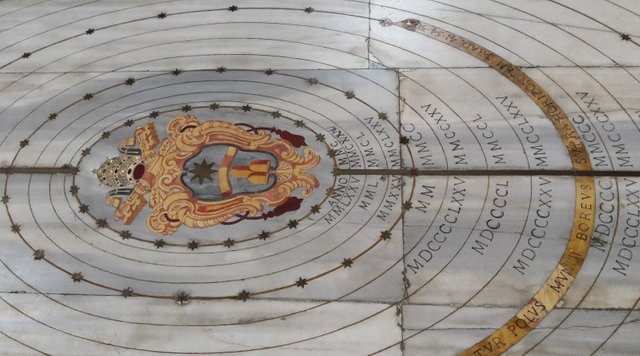
The Baths of Diocletian were built around the year 300 AD. at the behest of Emperor Maximian, who dedicated them to Diocletian with whom he shared command of the empire. The plant remained in operation until the mid-sixth century when the city and its water system were damaged due to the Greek-Gothic war. The baths were abandoned for almost a millennium. But then, in 1561 Pope Pius IV assigned this complex to the construction of a church, entrusting the project to none other than Michelangelo. The new church was dedicated to the Madonna degli Angeli and the Christian Martyrs, in memory of the Christians who, according to tradition, had died in the construction of the Baths. And it is precisely here, beyond these doors, that, a few centuries later, an instrument was built that made it possible to measure and keep time under control. This is the Clementine line, a large monumental sundial.
How the sundial is made?
The sundial was born in the early 1700s, when Pope Clement XI entrusted himself to the guidance of the mathematician and astronomer Francesco Bianchini to build it. It was not supposed to be just any sundial but a monumental sundial that competed with those existing in other cities, such as the one that the astronomer Gian Domenico Cassini had built a few decades earlier in the church of San Petronio in Bologna. Bianchini had been a pupil of Cassini, so he was the ideal person for this task.
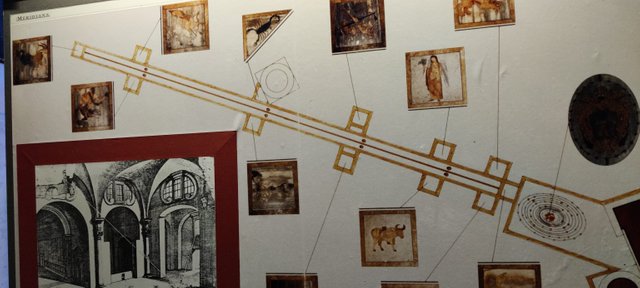
The result was magnificent. The sundial is a large bronze line framed by a strip of marble, extending almost diagonally for about 45 meters. Inside some squares on the right of the line are represented the zodiac signs of the summer and autumn constellations whose images are taken from the work Uranometria by the German astronomer Johann Bayer; on the left are those of the spring and winter constellations. At the two ends of the sundial appear the signs of the constellations of Cancer and Capricorn.
How does he measure time?
The method by which time can be measured with this sundial is as ingenious as it is simple. The sunlight penetrates through a hole in the center of the heraldic coat of arms of Clement XI at a height of 23 meters. The position of the projection of the solar disc at noon of each day runs throughout the year. Along the way, the shape of the disc is not always the same, but becomes elliptical, with a major axis ranging from 21 centimeters at the summer solstice to 111 centimeters in the winter, while at the two equinoxes it measures 34 centimeters. But the one projected is precisely the image of the Sun, and in theory it would be possible to see the most visible solar phenomena such as the transits of Venus.
The Sun starts from the constellation of Cancer on the Summer Solstice, reaches Capricorn on the Winter Solstice and then goes the other way around in the other half of the year. In the course of each year, therefore, each point of the sundial is illuminated twice. Numbers are arranged along the sundial that indicate exactly what the height of the Sun is in the sky and the name of the stars that are in the positions that will be covered by the Sun at that time.
The date of Easter
The purpose of the sundial was to accurately verify the validity of the reform of the Gregorian calendar, still relatively recent at the time, and in particular to tune in the best possible way the motions of the stars and the date of Christian Easter. Easter, according to what was decided at the Council of Nicaea in the year 325 AD. it must be celebrated on the first Sunday after the first full moon of spring, the beginning of which, for these calculations, is conventionally set at 21 March. For the Church it is very important to determine the astronomical events that identify this date for the determination of the dates of all the holidays related to it, such as the ascension and Pentecost. The Sundial has the specific task of tracing the Spring Equinox, and Easter is located between the two Terminus Pasche limits, within which its date falls.
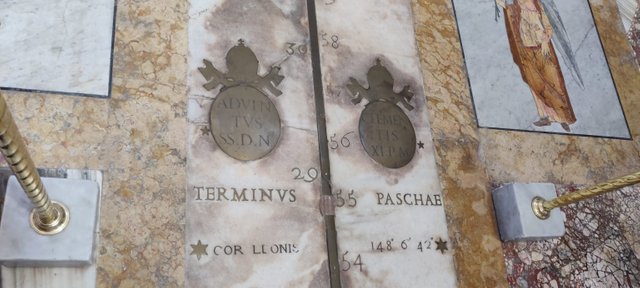
Something is not right
On closer inspection, the zodiac signs that we see represented on the sundial are not exactly those in which the Sun is found when its image crosses them, because we must consider the motion of the precession of the equinoxes which causes a phase shift over the centuries. And in reality, even the measured midday is not quite what we would see on the clocks, because the time we measure is determined by time zones, it is the same both in Rome and in Milan and in Paris. The sundial, however, measures the local noon, that is the one linked to the apparent motion of the Sun in the place where we are and it is something that changes from place to place.
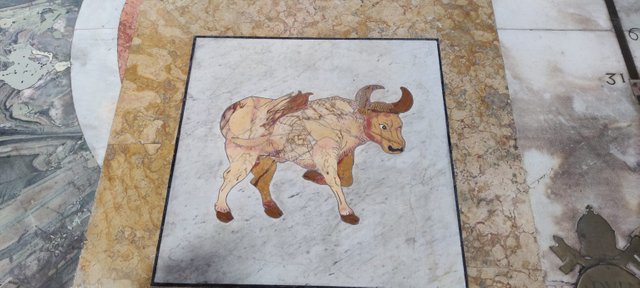
The North Star, the precession, the cannon of the Janiculum
At the end of the Clementine line there is another astronomical instrument that has to do with both the precession of the equinoxes and the motion of the polar star. At the center of the drawing is the north celestial pole, all around the positions of the North Star projected during the night on the floor of the basilica. The position of the star changes due to the precession of the equinoxes, describing increasingly larger or smaller circles around the pole. In the outermost ellipse there is the circle that describes the motion of the polar star at the inauguration of the sundial, and then the circles on which it will be found over time with the corresponding centuries are shown.
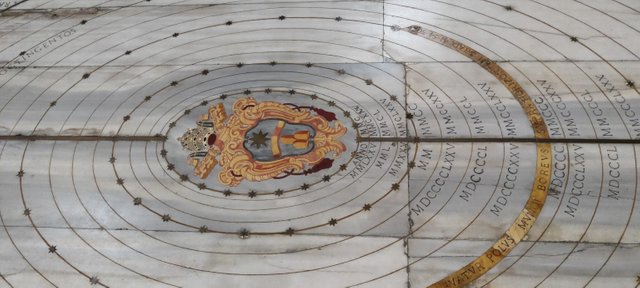
With the sundial you can also measure much slower movements. The length of the path of 45 meters depends on the inclination of the earth's axis on the ecliptic, the plane on which the planets orbit, because the inclination of the apparent path of the sun in the sky also depends on this. Due to the millennial motions of the Earth, the inclination of the axis varies between 22 ° and just over 24 °. And in the three centuries that this church's sundial was used, a change in the path of the sun of about 10 centimeters was actually observed.
The sundial was used to regulate the clocks in Rome until 1846, when it was replaced by the gunshot from the Janiculum which announced noon. But it was with the sundial that this cannon clock was adjusted. Even if it is no longer used, the Sundial of S. Maria degli Angeli will in any case continue to measure the passing of incessant time for the next few centuries.